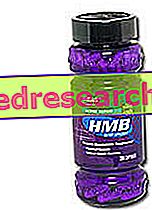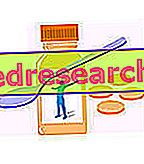
About HMB - EAS
HMB - EAS
Food supplement based on hydroxy beta methyl butyrate
FORMAT
200 cps bottle
COMPOSITION
Hydroxy beta methylbutyrate (HMB): salified with calcium
Capsule: edible gelatin
Anti-caking agents: Magnesium stearate, silicon dioxide, Potassium phosphate e
Calcium phosphate
One capsule contains: Hydroxy beta methyl butyrate 250 mg
Product features HMB - EAS
Hydroxybetyl methyl butyrate - scarcely present in nature (fish is the best source), it is a derivative of the alpha-keto isocaproate, ketoacid originated after transamination of the branched-chain amino acid leucine. The supplement therefore represents the best source of employment. Preliminary pharmacokinetic studies have shown that at the oral 1gr dose, a plasma peak occurs after 2h, with renal elimination of about 14% of the original dose. At the dose of 3 g, on the other hand, the blood peak is anticipated per hour, while the clearance reaches 29%. Concomitant glucose administration delays the peak by about one hour, but its clearance remains unchanged. The subsequent distribution of this molecule among the various tissues is still unclear, and the possible efficacy of insulin-mediated intake, as instead occurs for branched-chain amino acids.
The biological functioning mechanism of HMB is still unclear, but it is certainly involved in the modulation of protein homeostasis.

It is assumed to play a direct role in improving protein synthesis, and in inhibiting protein degradation via ubiquitin proteasome. Moreover, from studies carried out on animal models, it appears to have an antioxidant and antiapoptotic potential which still needs to be characterized.
The interest of the HMB from the commercial point of view is due to the effects recorded on cachectic individuals, on elderly individuals and on animal models, in which the administration of HMB has definitely improved the protein turnover, significantly increasing the lean mass and exhibiting a potential beneficial effect on the lipidemic and immune profile.
Naturally the application in the sports field finds meaning, given the modulating role in protein synthesis.
Rational integration into HMB - EAS sports practice
From a recent review, which examined all the studies in the literature concerning the use of HMB in sports, it emerged that about 394 individuals were enrolled (still few to draw statistically significant conclusions) and that the results seem be somewhat discordant. However, it seems that the best ergogenic effects are registered on untrained individuals, with an increase in maximum strength, and a reduction in markers of muscle damage induced by physical activity, while the integration in trained individuals seems to be ineffective. The variation of the body composition, induced by HMB, identifiable exclusively on untrained individuals, for which it must also take into account the individual variability of the response to physical exercise, is also of little significance.
Recommended use by the company - HMB - EAS
It is recommended to take 4 capsules 3 times a day.
Use in HMB - EAS sports practice
In studies in which there are encouraging results, the established dosage is 3 grams per day, while from pharmacokinetic tests the optimal dosage appears to be 38 mg / kg.
Acute administration is completely ineffective, and the various studies seem to agree on this. In order to minimize the renal elimination of the product, it would be appropriate to divide the daily dosage into 3 doses of 1 g, while there is still no evidence on the effectiveness of HMB absorption on an empty or full stomach.
The product in question has capsules with 250 mg of HMB each, inevitably with the pros and cons:
- PRO: possibility to modulate the dosage considerably;
- CONS: many capsules (4) to be swallowed to reach the dosage of 3 gr.
The suggested delivery schedule includes 1 g at breakfast, one post-workout and one before bedtime, for at least 4 weeks. However, the mechanism of action has not yet been clarified, the potential benefits that could derive from a pre-workout administration are not known, taking into account that the plasma peak is obtained after 2h, for the dose of 1 gr.
How to optimize your HMB - EAS business
Synergy with creatine seems completely ineffective and documented by several studies.
More rational, and theoretically justified but experimentally not yet proven, could be the simultaneous administration of BCAA, enhancing the anticatabolic effect of HMB.
On the contrary, the beneficial effect of preserving and increasing the lean mass, obtained following the administration of HMB with arginine and glutamine in cancer and AIDS patients, and of HMB with arginine and lysine in elderly men and women has been demonstrated.
HMB - EAS side effects
The administration of HMB appears to be well tolerated at doses between 3 and 6 grams per day, and well documented in the literature even for several weeks of administration.
Animal studies also show how very high doses are tolerated.
A reduction in blood pressure was recorded in some studies following the administration of HMB, but this appears to be due to the presence of calcium in the product.
Precautions for use HMB - EAS
The product is contraindicated in cases of renal or hepatic disease, cardiovascular disease and / or hypertension, during pregnancy, during lactation, under 12 years and for adolescents not yet trained.
In the event of prolonged use (over 6/8 weeks), medical advice is required.
This article, elaborated on the critical re-reading of scientific articles, university texts and common practice, is for informational purposes only and is therefore not a medical prescription. It is therefore always necessary to consult your doctor, nutritionist or pharmacist before starting to use any kind of supplement . More information on the critical analysis of HMB - EAS.
| BIBLIOGRAPHY |
The prevention and treatment of exercise induced muscle damage. Howatson G, van Someren KA. Sports Med. 2008; 38 (6): 483-503. Review. Beta-hydroxy-beta-methylbutyrate (HMB) supplementation and promotion of muscle growth and strength. Slater GJ, Jenkins D. Sports Med. 2000 Aug; 30 (2): 105-16. Review. Beta-hydroxy-beta-Methylbutyrate and its use in athletics. Palisin T, Stacy JJ. Curr Sports Med Rep. 2005 Aug; 4 (4): 220-3. Review. Exercise-induced muscle damage is not attenuated by beta-hydroxy-beta-methylbutyrate and alpha-ketoisocaproic acid supplementation. Nunan D, Howatson G, van Someren KA. J Strength Cond Res. 2010 Feb; 24 (2): 531-7. Mechanism of attenuation by beta-hydroxy-beta-methylbutyrate of muscle protein degradation induced by lipopolysaccharide. Russell ST, Tisdale MJ. Mol Cell Biochem. 2009 Oct; 330 (1-2): 171-9. Epub 2009 Apr 30. Effects of nine weeks of beta-hydroxy-beta-methylbutyrate supplementation Thomson JS, Watson PE, Rowlands DS. J Strength Cond Res. 2009 May; 23 (3): 827-35. Effects of beta-hydroxy-beta-methylbutyrate supplementation during strength training, body composition, and muscle damage in trained and untrained young men: a meta-analysis. Rowlands DS, Thomson JS. J Strength Cond Res. 2009 May; 23 (3): 836-46. Acute and timing effects of beta-hydroxy-beta-methylbutyrate (HMB) on indirect markers of skeletal muscle damage. Wilson JM, Kim JS, Lee SR, Rathmacher JA, Dalmau B, Kingsley JD, Koch H, Manninen AH, Saadat R, Panton LB. Beta-hydroxy-beta-methylbutyrate supplementation reduces ex vivo tumor growth and tumor cell proliferation and prevents cachexia in Walker 256 tumor-bearing rats by modifying nuclear factor-kappaB expression. Nunes EA, Kuczera D, Brito GA, Bonatto SJ, Yamazaki RK, Tanhoffer RA, Mund RC, Kryczyk M, Fernandes LC. Nutr Res. 2008 Jul; 28 (7): 487-93. Effect of beta-hydroxy-beta-methylbutyrate (HMB) on protein metabolism in whole body and in selected tissues. Holecek M, Muthny T, Kovarik M, Sispera L. Food Chem Toxicol. 2009 Jan; 47 (1): 255-9. Epub 2008 Nov 21. Effects of beta-hydroxy-beta-methylbutyrate (HMB) on exercise performance and body composition across varying levels of age, sex, and training experience: A review. Wilson GJ, Wilson JM, Manninen AH. Nutr Metab (Lond). 2008 Jan 3; 5: 1. J Appl Physiol. 1996 Nov; 81 (5): 2095-104. Effect of leucine metabolite beta-hydroxy-beta-methylbutyrate on muscle metabolism during resistance-exercise training. Int J Sport Nutr Exerc Metab. 2001 Dec; 11 (4): 442-50. Short-term beta-hydroxy-beta-methylbutyrate supplementation does not reduce symptoms of eccentric muscle damage.Paddon-Jones D, Keech A, Jenkins D. J Nutr Biochem. 2001 Nov; 12 (11): 631-639. Effects of amino acids supplement on physiological adaptations to resistance training. Kraemer WJ, Hatfield DL, Volek JS, Fragala MS, Vingren JL, Anderson JM, Spiering BA, Thomas GA, Ho JY, Quann EE, Izquierdo M, Häkkinen K, Maresh CM. Med Sci Sports Exerc. 2009 May; 41 (5): 1111-21. Effects of six weeks of beta-hydroxy-beta-methylbutyrate (HMB) and HMB / creatine supplementation on strength, power, and anthropometry of highly trained athletes. O'Connor DM, Crowe MJ. J Strength Cond Res. 2007 May; 21 (2): 419-23. The effects of beta-hydroxy-beta-methylbutyrate (HMB) and HMB / creatine supplementation on indices of health in highly trained athletes. Crowe MJ, O'Connor DM, Lukins JE .. Effects of beta-hydroxy-beta-methylbutyrate and creatine monohydrate supplementation on the aerobic and anaerobic capacity of highly trained athletes. O'Connor DM, Crowe MJ. A randomized, double-blind, placebo-controlled trial of a beta-hydroxyl beta-methyl butyrate, glutamine, and arginine mixture for the treatment of cancer cachexia (RTOG 0122). Berk L, James J, Schwartz A, Hug E, Mahadevan A, Samuels M, Kachnic L; RTOG. Support Care Cancer. 2008 Oct; 16 (10): 1179-88. Epub 2008 Feb 22. Year-long changes in protein metabolism in elderly men and women supplemented with a nutrition cocktail of beta-hydroxy-beta-methylbutyrate (HMB), L-arginine, and L-lysine. Baier S, Johannsen D, Abumrad N, Rathmacher JA, Nissen S, Flakoll P. JPEN J Parenter Enteral Nutr. 2009 Jan-Feb; 33 (1): 71-82. |



